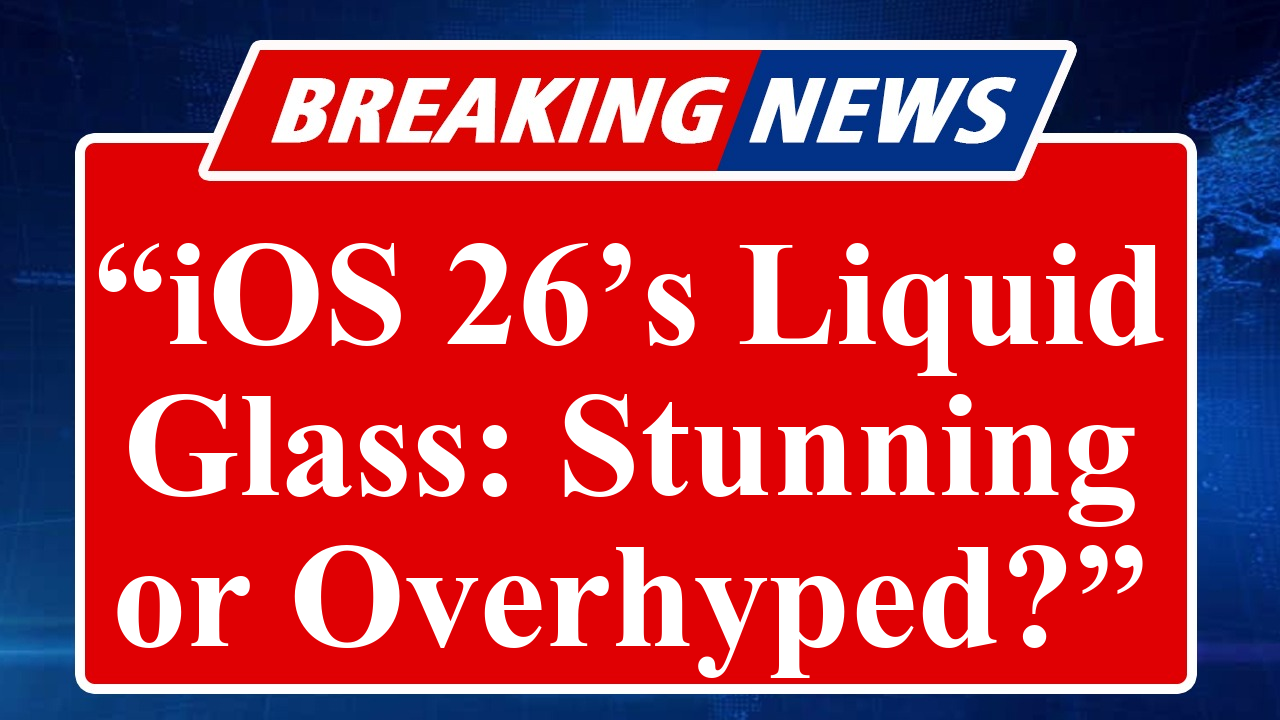Apple’s iOS 26, revealed at WWDC 2025, introduces the Liquid Glass interface, a translucent design inspired by visionOS. Featuring dynamic app icons, adaptive controls, and AI enhancements, it’s the biggest overhaul since iOS 7. Despite mixed user reactions, Apple refines readability issues in beta updates, aiming for a fall 2025 release alongside the iPhone 17 series.
iOS 26’s Liquid Glass: A Bold New Design for Apple Devices
Apple announced iOS 26 at its Worldwide Developers Conference (WWDC) 2025, unveiling a transformative design language called Liquid Glass. Described as the most significant visual overhaul since iOS 7, this interface introduces translucent, glass-like elements that adapt to ambient light and device movement, creating a dynamic and immersive user experience. The design extends across Apple’s ecosystem, including iPadOS 26, macOS Tahoe 26, watchOS 26, and tvOS 26, ensuring a cohesive aesthetic.
The Liquid Glass interface, inspired by visionOS, features crystal-like app icons, floating tab bars, and adaptive controls that respond to content and context. For instance, tab bars in apps like Safari and Apple Music shrink when scrolling to maximize screen space and fluidly expand when needed, offering a content-first approach. Apple’s vice president of Human Interface Design, Alan Dye, called it “expressive, charming, yet immediately recognizable,” emphasizing its blend of style and usability.
However, the initial developer beta faced criticism for readability issues, particularly in the Control Center, where excessive transparency made text hard to discern. Social media platforms like X buzzed with user feedback, with some praising the sleek animations while others mocked the “frosted-glass overload.” In response, Apple released iOS 26 Beta 2 on June 24, 2025, introducing a darker background and increased blur for better legibility, especially in Clear Dark mode. The Reduce Transparency option in Accessibility settings was also enhanced to address visibility concerns.
Beyond aesthetics, iOS 26 integrates Apple Intelligence for smarter features. The Photos app now offers advanced editing capabilities, Siri is more context-aware, and Apple Maps includes AI-powered navigation with Preferred Routes and Visited Places, secured with end-to-end encryption. Apps like Camera, Messages, and Apple Music have been revamped with Liquid Glass-inspired elements, such as translucent buttons and floating controls, enhancing daily usability. A new Live Radio widget and a unified Phone app layout further elevate the user experience.
Apple has also made Liquid Glass accessible to developers through updated APIs, similar to Google’s Material 3 design language, enabling third-party apps to adopt the translucent aesthetic. The interface’s adaptability to light and dark environments makes it suitable for diverse settings, from bright sunlight to dimly lit rooms. Posts on X highlight its potential for future devices, with rumors of a 2027 “Glasswing” iPhone featuring curved glass construction.
The beta phase has not been without controversy. A viral rumor on X claimed Apple fired the Liquid Glass designer, but Techlusive debunked this, confirming the individual had no ties to Apple’s design team. Despite the backlash, Apple’s iterative updates show responsiveness to user feedback, with the public beta expected in July 2025 and the final release slated for mid-September, alongside the iPhone 17 series.
The Liquid Glass design hints at Apple’s broader vision, potentially aligning with future AR/VR devices where transparent interfaces could integrate seamlessly with physical environments. While some users on X expressed concerns about practicality, others lauded the 3D Lock Screen and spatial wallpaper effects for their immersive quality, likening them to Nintendo 3DS visuals. As Apple refines this bold design, iOS 26 promises to redefine how users interact with their devices.
Disclaimer: This article is based on news reports, user feedback on X, and official Apple announcements. Information from beta versions may change before the final release. Always verify details from credible sources.

